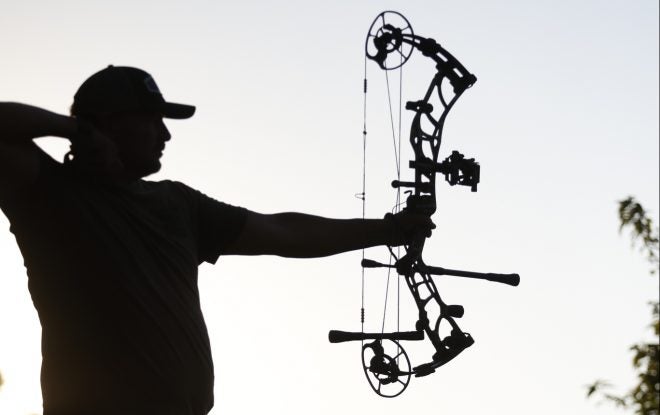Release Your Full Prospective with the most recent Bow Stabilizer Innovations
Release Your Full Prospective with the most recent Bow Stabilizer Innovations
Blog Article
Maximize Your Archery Precision With These Bow Stabilizer Techniques
One essential aspect that can substantially impact your efficiency is the proper utilization of bow stabilizers. Whether you are an experienced archer looking to fine-tune your skills or a beginner eager to enhance your accuracy, understanding these bow stabilizer methods can be the trick to striking your mark with unequaled uniformity.
Advantages of Making Use Of Bow Stabilizers
Utilizing bow stabilizers can substantially improve an archer's accuracy and general performance by reducing bow torque and vibration. Bow torque, brought on by the unequal circulation of weight in the bow, can bring about inconsistencies in shot placement. By attaching a bow stabilizer, the weight is redistributed, lowering the results of torque and assisting the archer achieve an extra regular shot. Additionally, bow stabilizers dampen resonance, which not only enhances the comfort of capturing but likewise avoids the bow from leaping upon launch, therefore helping in keeping correct objective.
Moreover, bow stabilizers can aid in holding the bow constant, especially during gusty problems or when firing from longer ranges. The included weight at the front of the bow supplies security and equilibrium, enabling the archer to concentrate on intending without the disturbance of bow motion. In general, the advantages of using bow stabilizers expand past just precision, boosting the archer's experience and performance in numerous shooting scenarios.
Choosing the Right Bow Stabilizer
Selecting the proper bow stabilizer is critical for maximizing your archery devices and improving shooting performance. Heavier stabilizers can assist minimize bow torque and absorb even more vibration, leading to a steadier purpose.

Lastly, think about the design of the stabilizer. Some stabilizers come with adjustable weights or dampeners that allow you to customize the balance and feeling of your bow. Ultimately, choosing the best bow stabilizer entails finding an equilibrium between weight, product, size, and style to improve your capturing accuracy and total performance.
Correct Installment Methods
To make certain ideal performance and safety in archery, grasping appropriate setup techniques for your bow stabilizer is crucial. The primary step in setting up a bow stabilizer is to recognize the correct read more positioning on your bow. The majority of stabilizers are connected to the front anchor of the riser, below the grip, to help counterbalance the weight of accessories such as sights and quivers. Ensure that the stabilizer is not conflicting with other elements or hindering your shooting kind.
Next, firmly attach the stabilizer to the bow making use of the ideal installing equipment. Some stabilizers come with adjustable weights that can be added or eliminated to tweak the equilibrium of your bow.

Changing Stabilizer Weight and Length
After ensuring the appropriate installation of your bow stabilizer, the following action includes adjusting the weight and size to optimize its performance in boosting archery precision. The weight of the stabilizer plays an essential function in minimizing bow movement throughout the shot cycle.
A longer stabilizer can offer better stability by raising the range in between the bow and the weight at the end of the stabilizer. On the other hand, a shorter stabilizer supplies a lot more ability to move and might be preferred by archers who value agility and quick movements throughout shooting.
Advanced Stabilizer Tuning Tips
Achieving optimum bow security and precision in archery requires a nuanced strategy to advanced stabilizer adjusting. Advanced stabilizer adjusting includes fine-tuning different parts to boost the bow's equilibrium, reduce vibration, and boost overall accuracy.
An additional critical aspect of advanced stabilizer tuning is maximizing the damping residential or commercial properties of the stabilizer system. Checking out different materials for the stabilizer building and construction, such as carbon fiber or light weight aluminum, can additionally affect the bow's performance by changing its weight distribution Your Domain Name and tightness.
Verdict
In verdict, making best use of archery precision can be attained via the appropriate option, installation, and modification of bow stabilizers. In general, incorporating bow stabilizers right into archery technique can lead to better efficiency and enhanced accuracy.
Making use of bow stabilizers can significantly enhance an archer's accuracy and total performance by decreasing bow torque and resonance. Longer stabilizers supply higher stability and balance, especially for long-distance capturing, while shorter stabilizers use more adaptability and are much easier to maneuver in limited areas (bow stabilizer). Carbon fiber stabilizers are light-weight and long lasting, while light weight aluminum stabilizers are robust and give excellent vibration dampening
A longer stabilizer can provide higher stability by enhancing the distance in between the bow and the weight at the end of the stabilizer.One more critical aspect of innovative stabilizer adjusting is enhancing the damping residential properties of the stabilizer system.
Report this page